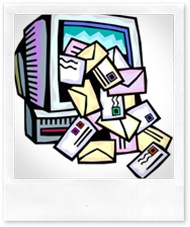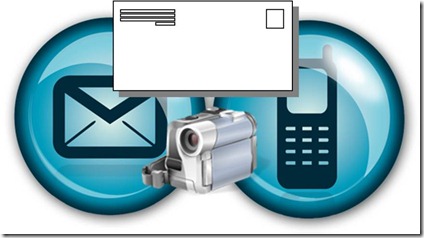Entries from April 2010 ↓
April 30th, 2010 — copywriter, direct response copywriting, sales writing

This is always a tough question to answer when putting together a sales letter.
Every product is different so the answer will depend on what you are selling. But what if you are trying to sell an information product – something along the lines of an eBook or report, for example. How much information do you ‘give away’ about it?
What can I do for you today?
It’s a bit like when you go into the hairdressers – do you opt for the full colour or just highlights?
Well, if you think about it – you are offering an information product. It will be designed to help your reader in some way. It may be designed to make them money, save them money, change their lifestyle, improve their careers – the possibilities are endless.
Because it will ‘change their lives’ you don’t want to tell all in your sales letter. If you did, what would be the point in buying the product?
Ben Settle makes an interesting analogy in his recent post ‘Hollywood’s Billion Dollar Copywriting Secret’ . When a new film is due for release, it is preceded by a trailer. This is designed to whet your appetite. As such, it involves a combination of high action snippets from the film set to enlivening music with a compelling and dramatic voice over.
Basically what they are doing, is giving you the edited highlights of the whole film. It will be the most dramatic sections that you see and when strung together, it will produce a powerful image.
Therefore when you’re putting your sales letter together you need to look at the most powerful benefits your product has – what is the greatest impact it will have on your reader? What is the problem they desperately need a solution to and that your product will provide.
It is these highlights you need to extract and place in your sales letter. You have to give them just enough to make them want more.
Whatever you’re selling, always concentrate on the main benefits of your product. Your reader is going to want to know what your product will mean to them. Give them what they’re looking for and they’ll buy.
Sally Ormond – freelance copywriter
April 28th, 2010 — copywriter, copywriting tips, freelance copywriter

Whether you are talking about your sales website or your company blog, if your copy is lousy it’s going to let you down – big time.
Remember your school days? How the good looking kids always seemed to get an upper hand; you never saw an unattractive sports team captain, the head boy/girl was always gorgeous etc. Well, your website or blog is going to follow exactly the same trend.
Learn to be attractive
It pains me to have to admit that being attractive is the best way to get where you want to be. At school I was the ‘ever-so-slightly-heavier-than-she-should-be’ kid who was the last one to be picked during PE lessons. To try and lift me, my parents would come up with the old classic ‘looks aren’t everything’ – but the problem is, they are – at least to a certain extent.
To me, as a copywriter, the copy on your website or blog is paramount. It is that that does the hard work in engaging with your reader and getting them to place an order. But the look of your website or blog is going to have an effect of whether your reader actually stops to browse your site.
If you have an attractive looking site, that’s pleasing to the eye, someone is more likely to stick around and have a look. Of course, if the copy on that site is shocking, they’ll leave. Equally, if you have incredible copy on a God awful looking site, they’re not going to hang around long enough to read it.
Getting the picture?
There are many things you can do to make your website gorgeous, but rather than listing all of those, here are some things you should avoid at all costs:
Know who you are writing to. Your audience has specific needs – all you have to do is identify those and satisfy them.
Make sure you don’t try and talk to everyone. Have a single reader in mind when writing your copy. You can’t address everyone because if you try you’ll just end up creating copy that is confused.
Plus, when it comes to the length of your post, be sensible. Although your reader is going to want something that answers all their questions, they probably won’t have the time to sit and read your version of War and Peace. Make sure your copy is measured and complete but keep it relatively brief.
When you begin to write, think about how it looks. If your reader is faced with a wall of text that extends down their screen which the have to scroll through, they will be severely turned off.
Break your copy up into manageable chunks. Use sub headings to indicate what information is to follow so they can dip into your copy and read the most relevant parts to them.
Make it easy to read by using a high contrast between text colour and background – go for black on white or white on black. You don’t want your reader to have to strain to work out what you’ve written.
Before you even start thinking about the body of your copy you need to come up with a masterful headline that will grab your reader’s attention and make them want to read on.
If you produce dull copy, it won’t be read. Writing about how great you are or producing something that is stuffed with jargon, won’t get read. There is only one thing you have to keep in your mind – what does your reader want to know. To give you a clue it will probably have something to do with ‘What’s in it for me?’
At the end of the day, your reader will only spend their precious time reading your copy if they are going to get something out of it at. Harsh but true.
You will want to make your copy look appealing. But be careful with the colour. Splashing your page with a rainbow of colours will make it look gaudy rather than engaging. Stick with just a few colours that fit with your company’s image.
Also don’t over do the design elements on your site – less is definitely more. If you have too many pictures, logos, flashing images or banners on your site it will be distracting to your reader. Keep it simple.
Why do you need to know this?
Getting either your copy or your design wrong could effectively kill your site. You must make sure you consider both elements and how they need to work together.
If in doubt always go for less is more.
Sally Ormond – freelance copywriter
April 26th, 2010 — copywriter, freelance copywriter, social media, social media marketing

Social media marketing is something that every business should be doing. It doesn’t matter what size you are – SME or a large multinational – social media is the way to promote your business.
But it’s not just about PR, social media is also an effective way to monitor your brand and improve your customer service.
So why aren’t you out there doing it?
My time is precious
Although social media marketing isn’t expensive in the traditional sense – you don’t need to invest in large quantities of hardware or software – it is a drain on your time resources.
“I can’t afford to spend that amount of time playing with social media.”
That is the attitude of many businesses. But can you really call it ‘playing’ when you weight up the benefits it will bring your business?
How many other things offer you:
- Unlimited PR opportunities
- Direct contact with your customers to gain insightful feedback
- A way to constantly monitor your brand
- The opportunity to respond to negative feedback in an instant
- The chance to ‘talk’ directly with your customers at any time
But if you still think you don’t have the time to adopt or develop a social media marketing strategy, just think about how life in the office has changed over the years.
Once upon a time people could only phone you at the office, now they can get hold of you anytime thanks to mobile phones. At one time you would find yourself wading through a pile of mail every morning and dealing with all your clients via post. Then came along that new-fangled thing called email – now, you can’t function without it.
Social media marketing is simply the next stage in the communication development.
Embrace it and win
Learn to make time and your business will benefit hugely from this new technology – listen to me, ‘new technology’ – it’s hardly new anymore so why aren’t you doing it?
Work out what you need to do within your company. Which is going to be best for you? Blogging, Twitter, Facebook, article marketing? Probably a mixture.
Then plan who will be dealing with this. This is your opportunity to talk directly to your customers. And remember, the responsibility for your social media marketing strategy doesn’t have to fall solely on one pair of shoulders.
Although you may want just one person dealing with your Twitter account (continuity of voice helps to generate a strong bond with followers and potential clients), there is no reason why you can’t share the blogging responsibilities.
Many companies are tempted to ‘farm out’ this kind of work. As a copywriter I would be happy to help you, but remember that blogging is your opportunity to get your opinions out to your readers. You are trying to build a relationship with them, so using someone outside your company may make this difficult.
By all means use guest bloggers as this can often bring in fresh ideas which you could use to further develop your blog.
There are a huge number of posts out there about using social media, probably telling you similar things to this one. So why are you still ignoring them?
Don’t get left behind. Your competitors are using social media to keep ahead of the game – they know what their customers want (and don’t want) before you do, they know if there is any negative feedback about their business and can deal with it before you know about it. By using social media they will remain one step ahead of you so isn’t it about time you took the initiative to redress the balance.
Social media marketing will help you stay one step ahead of the game or at least remain on a par.
April 23rd, 2010 — blogging, copywriter, marketing

The benefits of blogging for business are obvious. It will help drive traffic to your website, allow you to get your views and opinions ‘out there’, give you a method of conversing with your customers and establish you as an expert in your industry.
But are you spending time reading other people’s blogs?
The benefits of taking time out of your busy schedule to read what others are talking about are numerous. Not least because it keeps you up to date with current thinking and trends in your field and those associated with your business.
It will also help keep you up to date with the ever changing world of search engine optimisation so you can ensure your online marketing activities are always at their optimum.
But more than that, reading and commenting on other people’s blogs will help drive traffic back to your website. However, that doesn’t mean you should merrily write any old thing in the hope of people tracking you down over the web.
If you are going to set up a blog commenting strategy, make sure you do it well.
How not to comment on blogs
A lot of people are beginning to understand the benefits of commenting on other’s blogs, but many are doing it badly.
You may think that commenting is simple – any fool can do it. Well, you’d be wrong because below are some common pitfalls that people constantly slip into:
- Trying to be clever can offend
If there is one thing that doesn’t convey well in the written word it is intonation and irony (OK, yes I know that’s two things). When we speak to someone face to face our body language and voice patterns show when we are being ‘funny’. Try and convey the same kind of message on a blog comment and you could come across as rude or offensive. Not a good thing.
However tempted you are at making a quip about someone else’s post, keep your comments professional at all times.
- Don’t hide behind your keywords
Sometimes you’ll see people reply using their keywords as their name rather than their real name. So, for example, if I was to leave a comment I’d put it was written by copywriter Suffolk rather than Sally Ormond.
Firstly it looks awful and secondly it takes away the personal nature of your comment. You wouldn’t introduce yourself as ‘copywriter Suffolk’ if you were meeting someone face to face so don’t sign yourself as that.
- Please, please, proofread before hitting send
This one pretty much speaks for itself. As with everything you publish on the net (and with other marketing materials) always proofread. Think how sloppy you’ll look if your comment is crowded with spelling or grammatical errors.
Yes, we are all time limited, but it doesn’t take long to read what you’ve written before hitting send.
This type of comment is a complete waste of space. If you are going to take the time to reply to someone’s post at least think of something to say. Even if you do agree with everything they’ve said try to expand on it. Give examples of why you agree – write something that adds value to the post.
- Read it before you comment
A lot of people with comment strategies simply look for the blogs in their field with the highest page rank and comment on everything – quite often without actually reading the post in the first place.
This type of ‘blanket commenting’ is of no value whatsoever. No one will be impressed. If you are going to use blog commenting as a traffic building strategy at least take the time to read the post, evaluate what’s being said and then write a considered, thoughtful comment.
This is the lowest form of comment known to man. I get loads of spam comments on both my blogs. A spam comment is where someone writes a comment that contains links to their own website – a thinly veiled advert.
This is not good practice and will result in you being labelled a spammer. And once you have that reputation it will be very difficult to shake it off.
Why do you need to know this?
Reputations can be built and broken in the blink of an eye on the internet. If you get blog commenting wrong, the word will be out in seconds and we all know how quickly information can pass from person to person on the internet.
- Make sure you have a plan
- Make sure you read posts carefully before commenting
- Make sure you read your comments before hitting send
- Be professional at all times
April 21st, 2010 — copywriter, freelance copywriter, marketing

With the advances in email marketing, it’s very easy for businesses to fall in to the trap of using one form of communication for everything.
There are times when it may not be the most appropriate medium to use so it’s important to look at what you want to say.
The personal touch
If yours is the type of business that likes to remember customers’ birthdays – would you use email?
An electronic card, although convenient and cheap – doesn’t really do it. It doesn’t look as though a lot of thought has gone in to it. Whereas a handwritten card posted to them, shows the human side of your business – one they will want to do business with again in the future.
Quick response
Despite our best efforts, things don’t always go according to plan. When problems happen and you receive a complaint, think carefully about how you maintain contact.
The post can be slow, so if you need information from your customer that may not be the best way to go. However, once the problem’s been resolved, a written letter of apology always goes down well.
In this case, regular phone contact with one member of staff would be perfect. The customer gets the individual attention they want and they have one point of contact so they don’t have to explain the problem time and time again.
How to…
If you have information or instructions you need to convey, what option would you choose?
Written instructions can be long winded and unclear. Telephoning everyone would be completely impractical. You could run an email course, but would people read it and take it in?
Probably not.
The best method here would be a video tutorial. Placing that online means your customers can watch it at a time that’s convenient to them.
Why do you need to know this?
You need to look at your marketing as a multi-media activity. One size doesn’t fit all.
Think carefully about the information you need to relay before deciding on the most effective way of communicating it.
The strongest marketing strategies will utilise a number of different forms of communication – make sure you pick the right one for your customers’ needs.










